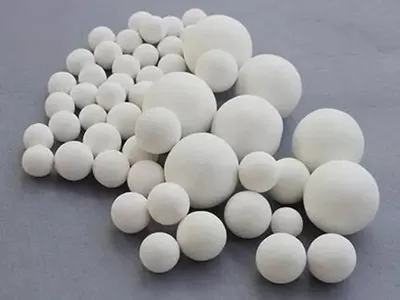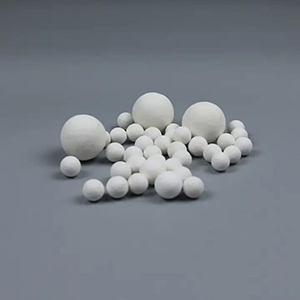The heat dissipation performance of ceramic balls varies by material, with silicon carbide and aluminum nitride ceramic balls exhibiting excellent thermal conductivity, while alumina and zirconia balls have moderate to low heat dissipation, suitable for different thermal management needs. This variation makes them adaptable to applications ranging from high-temperature machinery to insulation - related uses.
Silicon carbide ceramic balls stand out for superior heat dissipation, with thermal conductivity ranging from 80 to 120 W/(m·K). This high efficiency stems from their crystalline structure, which allows rapid heat transfer. They are ideal for high - temperature environments like industrial furnaces and turbine engines, where effective heat dissipation prevents overheating and maintains equipment stability. Their ability to withstand extreme temperatures while conducting heat makes them valuable in thermal management systems.

Aluminum nitride ceramic balls, though less common, offer exceptional thermal conductivity (180 to 200 W/(m·K)), comparable to some metals. This property, combined with electrical insulation, makes them suitable for electronics cooling, such as in semiconductor devices and LED heat sinks. They efficiently transfer heat away from sensitive components, ensuring optimal performance and longevity.
Alumina ceramic balls have moderate thermal conductivity (20 to 30 W/(m·K)), suitable for applications where controlled heat transfer is needed. They work well in heat exchangers and as packing in thermal processing columns, balancing heat dissipation with structural stability. Their cost - effectiveness makes them a practical choice for general industrial thermal management.

Zirconia ceramic balls have lower thermal conductivity (2 to 3 W/(m·K)), making them better suited for insulation purposes. In applications like high - temperature bearings where heat retention is required, their low heat dissipation helps maintain stable operating temperatures, reducing energy loss and protecting surrounding components from excessive heat exposure.
The heat dissipation of ceramic balls is also influenced by porosity and surface area. Dense, non - porous ceramic balls conduct heat more efficiently than porous ones, as pores act as insulators. Additionally, larger surface areas enhance heat dissipation through convection, a factor considered in designing cooling systems using ceramic balls.
In summary, ceramic balls' heat dissipation performance depends on material type, with silicon carbide and aluminum nitride excelling in heat transfer, alumina offering moderate performance, and zirconia providing insulation. This diversity allows their use in various thermal management scenarios, meeting both cooling and heat retention needs.



